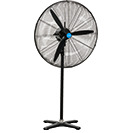What Are Ergonomic Workbenches?
Date Posted:8 May 2025
Discover the purpose and benefits of ergonomic workbenches for industrial workplaces.
In today’s fast-paced industrial and commercial environments, ergonomics is more than a buzzword, it's a crucial aspect of workplace health and efficiency.
Ergonomics refers to designing equipment and workspaces that fit the needs of the user, helping to minimise physical strain and improve workflow.
One of the most effective ways to implement ergonomic principles in the workplace is through the use of ergonomic workbenches.
These specially designed benches are tailored to support workers physically, reduce fatigue, and enhance productivity throughout long shifts.
Whether in manufacturing, healthcare, logistics, or electronics assembly, ergonomic workbenches contribute to a safer, more comfortable, and more efficient working environment.
In this blog, we will explore what makes a workbench ergonomic, the industries that benefit most, the features to look for, and why investing in ergonomic design pays off in the longrun.
If you’re interested in the applications of workbenches in the home, see our article on industrial vs residential workbenches.
What Is an Ergonomic Workbench?
An ergonomic workbench is a workstation designed with the worker’s comfort, safety, and efficiency in mind. Unlike standard workbenches, ergonomic models are adjustable and configurable to suit individual users or specific tasks.
They typically feature height-adjustable frames, user-friendly layouts, and support features that accommodate prolonged or repetitive work. The aim is to minimise strain and awkward postures.
At Verdex, we have a range of ergonomic workbenches including:
-
Ergonomic Industrial Packing Workbench (Half-Length Panel Starter Kit)
-
Ergonomic Industrial Packing Workbench (with back panel starter kit)
-
Ergonomic Industrial Packing Workbench (with side panel starter kit)
You can learn more about the fundamentals and basics of what are workbenches used for and the different types of workbenches used in industrial workplaces in our other related blogs.
.jpg)
Key Features of an Ergonomic Workbench
Ergonomic workbenches come equipped with a range of features that promote worker comfort and efficiency.
Adjustable height is a core component, allowing users to switch between sitting and standing positions, which reduces fatigue and supports better posture. Some models use electric motors for smooth height transitions, while others use manual cranks.
Tilting work surfaces provide additional flexibility, especially useful in electronics or fine assembly tasks.
Footrests can help maintain proper leg positioning, and anti-fatigue mats reduce pressure on joints during long periods of standing.
User-friendly layouts ensure that tools, components, and materials are within easy reach, minimising the need for overreaching or bending.
Optional accessories like monitor arms, lighting attachments, and modular storage units further enhance usability and customisation, making ergonomic benches ideal for dynamic work environments.
To create your own industrial workbench with the ideal shelving, railing and accessories, try our workbench configurator.
There are other key features to look for in a workbench suitable for the workplace to promote health and safety protocols.
Why Ergonomics Matter in the Workplace
Ergonomics plays a critical role in employee wellbeing and overall workplace productivity. Poorly designed workstations can lead to musculoskeletal disorders (MSDs), repetitive strain injuries (RSIs), and chronic discomfort.
Over time, these issues result in increased absenteeism, reduced morale, and higher healthcare costs for employers.
Ergonomic workbenches help prevent such problems by supporting natural body posture and reducing repetitive strain. Comfortable workers are more focused, efficient, and productive.
By investing in ergonomic equipment, businesses also demonstrate a commitment to their employees’ health, which can boost job satisfaction and retention.
Beyond the physical benefits, ergonomic improvements often lead to more streamlined workflows and better organisation, which enhances output quality and consistency across the board.
.jpg)
Industries That Benefit Most from Ergonomic Workbenches
Ergonomic workbenches are invaluable across a wide range of industries.
Technology Sector
In electronics assembly, where workers spend long hours handling delicate components, the ability to adjust bench height and angle is essential for precision and comfort.
Logistics and E-Commerce Sector
Packing stations in logistics and e-commerce benefit from ergonomic benches equipped with modular storage and tilting surfaces, reducing repetitive bending and lifting.
Healthcare Sector
Healthcare environments, such as laboratories and pharmacies, require sterile, height-adjustable workstations for tasks like sorting, labelling, and analysis.
Manufacturing Sector
Light manufacturing operations also benefit, especially when tasks involve repetitive motions or require high levels of concentration.
Hospitality Sector
Cleanrooms, research labs, and quality control departments often use ergonomic benches to support focus-intensive tasks while protecting worker health.
Regardless of the setting, the benefits of ergonomic workbenches are far-reaching and impactful.
Manual vs Electric Height Adjustment
When choosing an ergonomic workbench, one key decision is whether to opt for manual or electric height adjustment.
Manual models typically use a hand crank mechanism to raise or lower the work surface. These are generally more affordable and suitable for environments where height adjustments are infrequent or shared use is minimal.
Electric models offer effortless, smooth adjustment with the push of a button, making them ideal for multi-user workstations or tasks that require frequent repositioning.
They also support finer, more precise adjustments and often include memory settings for quick changes.
While electric benches come at a higher upfront cost, they offer unmatched convenience and flexibility, especially in dynamic workspaces.
The decision ultimately depends on budget, usage frequency, and the level of ergonomic control needed in your workflow.
Long-Term Benefits of Investing in Ergonomics
Investing in ergonomic workbenches yields substantial long-term returns.
-
Businesses benefit from reduced injury-related downtime, fewer compensation claims, and lower employee turnover.
-
Workers experience less discomfort and are more engaged, leading to improved morale and consistent output quality.
-
Additionally, ergonomic setups contribute to a more organised and productive environment.
Over time, the initial investment pays for itself through improved efficiency and a healthier workforce.
From a business perspective, it’s a proactive step that enhances both operational performance and employee wellbeing.
Are Ergonomic Workbenches Worth the Investment?
Yes, ergonomic workbenches are absolutely worth the investment. While the initial costs may be higher than standard alternatives, the long-term gains far outweigh the expense.
Reduced strain and injury risk lead to a healthier workforce and lower absenteeism. Enhanced comfort improves focus and reduces errors, boosting overall productivity.
Ergonomic benches are also adaptable, making them a long-term asset as business needs evolve.
With growing awareness of workplace wellbeing, many Australian businesses are choosing ergonomic solutions not just for compliance, but for the benefits they bring to daily operations. It's an investment in both people and performance.
At Verdex, we don’t just supply ergonomic workbenches. We also offer a comprehensive range of material handling equipment designed to improve workplace safety and efficiency.
From trolleys and conveyor equipment, to lifting equipment and industrial workplace equipment, our products support smooth operations across industrial environments.
Enquire About Our Ergonomic Workbenches Today
Incorporating ergonomic workbenches into your workplace is a smart move that supports health, safety, and productivity.
From adjustable heights to intelligent layouts and fatigue-reducing features, these benches are designed with the worker in mind.
Whether you're managing a warehouse, electronics lab, or commercial packing station, ergonomic solutions help reduce injury risk and keep operations running smoothly.
When selecting your next workbench, prioritise ergonomic design to ensure long-term value and comfort.
Explore our range of ergonomic workbenches or contact our team for expert advice tailored to your industry and workflow needs by:
-
Filling out our contact form
-
Emailing sales@verdex.com.au
FAQs
What makes a workbench ergonomic?
Ergonomic workbenches are designed to support natural body posture and minimise physical strain. Features like adjustable height, footrests, and tilting surfaces distinguish them from standard workbenches.
Are ergonomic workbenches adjustable for different users?
Yes, most ergonomic benches allow for manual or electric height adjustment, making them suitable for multiple users and varied tasks.
Can ergonomic benches support heavy-duty tasks?
Some ergonomic benches are built to handle moderate to heavy loads, but always check the weight capacity before use in industrial applications.
Do ergonomic benches really reduce injury risk?
Yes, they help prevent repetitive strain injuries and musculoskeletal issues by promoting better posture and reducing excessive physical effort.
What other types of workbenches are available?
On top of our range or ergonomic workbenches, we supply modular workbenches, electric-height adjustable workbenches, packing benches, stainless steel benches and heavy duty workbenches.
































































































































 Trolleys & Hand Trucks
Trolleys & Hand Trucks Cage Trolleys
Cage Trolleys Cleaning Carts & Trolleys
Cleaning Carts & Trolleys Construction Trolleys
Construction Trolleys Custom Trolleys
Custom Trolleys Hand Trucks & Dollies
Hand Trucks & Dollies Laundry/Linen Trolleys
Laundry/Linen Trolleys Lifting Trolleys
Lifting Trolleys Order Picking Trolleys
Order Picking Trolleys Panel Cart Trolleys
Panel Cart Trolleys Platform Trolleys
Platform Trolleys Powered Trolleys
Powered Trolleys Shelf & Tiered Trolleys
Shelf & Tiered Trolleys Shopping Trolleys
Shopping Trolleys Stainless Steel Trolleys
Stainless Steel Trolleys Tool Trolleys
Tool Trolleys Utility & Service Carts
Utility & Service Carts Lifting & Handling Equipment
Lifting & Handling Equipment Forklift Attachments
Forklift Attachments Jib Attachments
Jib Attachments Lifting Hoists & Pallet Hooks
Lifting Hoists & Pallet Hooks Load Skates & Tow Tugs
Load Skates & Tow Tugs Manual Stackers & Lifters
Manual Stackers & Lifters Pallet Jacks
Pallet Jacks Pallet Lifters
Pallet Lifters Pallet Rotators & Dispenser
Pallet Rotators & Dispenser Powered Pallet Trucks & Electric Lifters
Powered Pallet Trucks & Electric Lifters Scissor Lift Trolleys and Tables
Scissor Lift Trolleys and Tables Conveyor Equipment
Conveyor Equipment Conveyor Frames & Stands
Conveyor Frames & Stands Roller & Skate Conveyors
Roller & Skate Conveyors Ladders & Access Equipment
Ladders & Access Equipment Container & Yard Ramps
Container & Yard Ramps Ladders & Step Stools
Ladders & Step Stools Work Platforms & Crane Cages
Work Platforms & Crane Cages Drum Handling Equipment
Drum Handling Equipment Drum Storage & Bunding
Drum Storage & Bunding Drum Trolleys & Lifters
Drum Trolleys & Lifters Forklift Drum Handling
Forklift Drum Handling Waste Handling & Bins
Waste Handling & Bins Bin Lifters & Tippers
Bin Lifters & Tippers Plastic Waste & Wheelie Bins
Plastic Waste & Wheelie Bins Steel Waste & Tipping Bins
Steel Waste & Tipping Bins Waste Carts
Waste Carts Dangerous Goods Storage & Spillage
Dangerous Goods Storage & Spillage Aerosol Cans Storage Cages
Aerosol Cans Storage Cages Bunded Pallets & Storage
Bunded Pallets & Storage Corrosive Goods Storage Cabinets
Corrosive Goods Storage Cabinets DG Storage & Trolleys
DG Storage & Trolleys Flammable Liquid Cabinets
Flammable Liquid Cabinets Forklift Gas Storage Cages
Forklift Gas Storage Cages Site Storage
Site Storage Spill Kits
Spill Kits Shelving & Storage Equipment
Shelving & Storage Equipment Stillage & Transport Cages
Stillage & Transport Cages 750 Series Cage Configurations
750 Series Cage Configurations Heavy Duty Cabinets
Heavy Duty Cabinets Heavy Duty Shelving
Heavy Duty Shelving Mega Bins & Pallets
Mega Bins & Pallets Packing & Workbenches
Packing & Workbenches Parts Trays & Stor-Pak Bins
Parts Trays & Stor-Pak Bins Pegboard & Louvre Panels
Pegboard & Louvre Panels Plastic Bins & Crates
Plastic Bins & Crates Plastic Handling Solutions Bins
Plastic Handling Solutions Bins Plastic Pallets
Plastic Pallets Stack & Nest Bins
Stack & Nest Bins Pallet Racking Accessories
Pallet Racking Accessories Workplace Equipment
Workplace Equipment Modular Workbenches
Modular Workbenches Electric Height-Adjustable Workbenches
Electric Height-Adjustable Workbenches Floor Matting
Floor Matting General Workplace Equipment
General Workplace Equipment Industrial Weighing Scales
Industrial Weighing Scales Packaging Machinery
Packaging Machinery Stationery Cupboards
Stationery Cupboards Storage and Stillage Cages
Storage and Stillage Cages Tool Trolleys
Tool Trolleys Tooling Cabinets
Tooling Cabinets Workshop Fans and Coolers
Workshop Fans and Coolers Safety Barriers, PPE & Signage
Safety Barriers, PPE & Signage Barriers & Bollards
Barriers & Bollards First Aid Equipment
First Aid Equipment Gloves, Knives and PPE
Gloves, Knives and PPE Signage
Signage Cleaning & Site Supplies
Cleaning & Site Supplies Cleaning Equipment
Cleaning Equipment Cleaning Trolleys
Cleaning Trolleys Rubbish Bins
Rubbish Bins Signs & Traffic Supplies
Signs & Traffic Supplies Construction Equipment
Construction Equipment Construction Trolleys
Construction Trolleys Waste Handling
Waste Handling General Site Equipment
General Site Equipment Concrete Equipment
Concrete Equipment Site Storage
Site Storage Lifting Equipment
Lifting Equipment Verdex Specials
Verdex Specials T-Top Plastic Bollards
T-Top Plastic Bollards
 Yellow Plastic Stack & Nest Cra
Yellow Plastic Stack & Nest Cra










